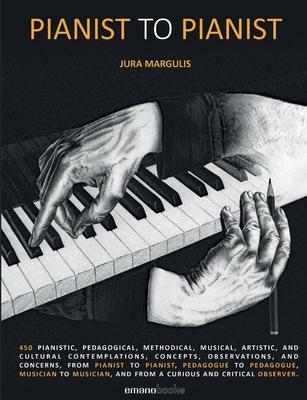PtoP is a book about music from the introspective of the instrument itself: the modern concert grand piano and the art to play and teach it on a world class level from within a living tradition. This instrument, after centuries of transformations and modifications, remains unchanged for now nearly 150 years as it reached its peak perfection in the late 19th century. Playing it really really well requires at least 10,000 hours of special training to a level of basic mastery. To compete on a world class level, continued training for another decade is necessary, which further necessitates and facilitates the development of special abilities: e.g. to reach and maintain an Olympic level of skills physically and mentally, to learn old and create new musical content, and to perform tens of thousands of notes in a sublimely organized order with expressive emotional abandonment and near 101%perfection from memory on stage.
The larger first parts I and II of this book are addressed to all interested in serious piano playing and its study, in piano pedagogy and instrumental methodology from Pianist to Pianist. The Golden Ratio proportioned smaller parts II and IIII of PtoP are addressed to all readers interested in musical and artistic reflections beyond the instrument itself, and in contemporary cultural observations and concerns from one citizen of the musical world to another.
PtoP's particular and unorthodox - structure and organization (SBP, Structured Bullet-Point format) makes this book 'difficult to place' in a music store; it is ... "not shelvable ..." according to publishers, hobbled by the structures of traditional libraries and bookstores. Or so I was told. One and/or more of the chapters expanded ... it surely would become shelvable as separate books in several distinct shelfs.
But perhaps it does not have to be 'shelvable' as it is. PtoP is well placed on the grand piano, as that is where it came from; and there are new ways to write, format, and publish in our day and age: In the digitized world of the 21st century, the content of PtoP can be read as a hard copy or on an electronic tablet, on the music stand, in one's hands, or on retina display, and evidently without ever having graced a shelf. One distinctive advantage of the Structured Bullet-Point (SBP) format is the accommodation of the ever-decreasing attention span, which is progressing precipitously in our emergent 21st century. Though often longer than the iconoclastic 140 characters, individual - bullet-point logs can indeed be read independently, like browsing a blog, one at a time or many in a row, and not necessarily in a chronological order.
